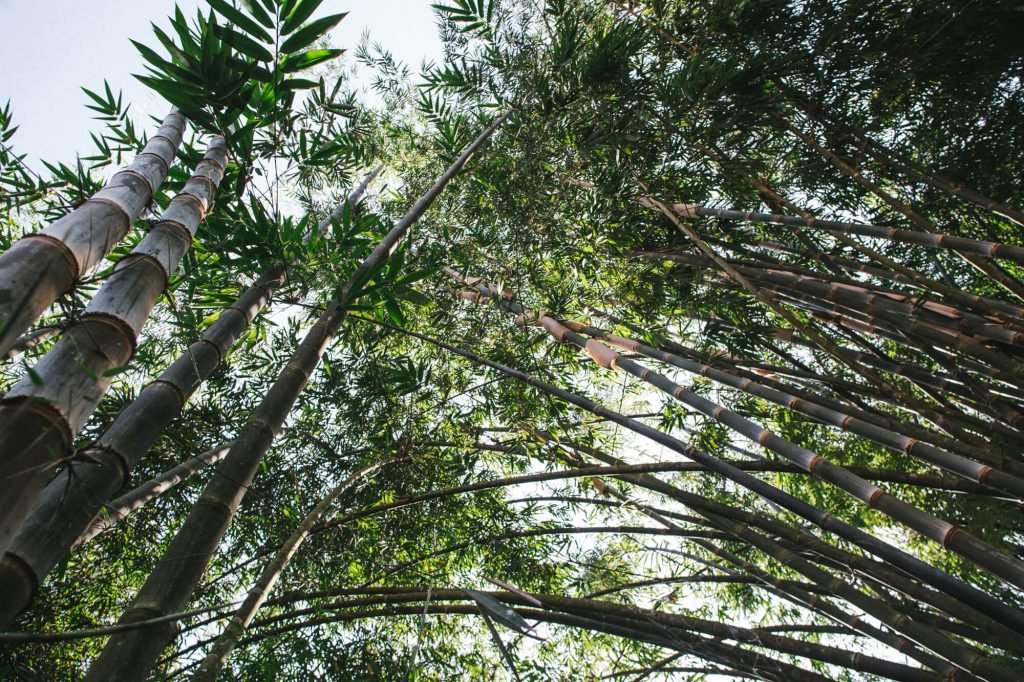If you’re interested in learning how to maintain your bamboo plants, then you’ve come to the right place. You’ll learn everything you need to know about bamboo maintenance – repotting, pruning, watering, and more. And, best of all, you’ll know that you can get your bamboo to flourish for years to come.

Pruning
Pruning bamboo is the process of removing old bamboo culms and promoting new growth. Bamboo has a tendency to spread and grow into anything it comes into contact with. It is important to keep the plant in good condition and prune it periodically to ensure that it does not become overgrown.
Depending on the species of bamboo you are growing, the pruning process may include bending the stems or cutting them off. For the best results, you will need a sharp hand saw, a pruner and gloves. Using a heavy-duty lopper or handsaw for large bamboo canes can also be useful.
The best time to prune bamboo is during the dormant season. When bamboo is not actively growing, the cutting will not damage the plant.
Watering
Watering for bamboo is a critical part of the plant’s maintenance. Although it’s a drought-tolerant shrub, it’s still important to ensure that the plants are properly hydrated.
Bamboo needs water in order to produce new shoots and maintain its rhizomes. It’s also a good idea to keep the leaves well-watered in order to retain moisture. This helps the plant stay green, preventing mold and mildew.
Watering for bamboo should be done slowly. Leaving the roots submerged for extended periods of time can cause the plants to rot. When watering, concentrate on the root ball.
The leaves may also tell you when it’s time to water. Leaves that curl inward or drop downward are a sign that the plant is not getting enough water. A leaf that rolls up to the sky is another indication that the plant is thirsty.
Repotting
Bamboo is a plant that is well-loved for its beauty and exoticness. It is low-maintenance, though it does need to be repotted from time to time.
To keep bamboo healthy, you need to maintain proper watering and fertilization. In addition, you must avoid allowing it to become root bound. This can be dangerous.
You can easily repot your bamboo by loosening the roots with a chopstick or a screwdriver. Then, you can place them in a new container. Make sure that the container is large enough to allow the roots to spread out.
Ideally, you should use a potting mix that is a well-draining, loamy mixture. For best results, it should be topped off with a layer of mulch. A thick layer will help retain moisture and prevent the soil from drying out.
Pests and diseases
Although bamboos are generally thought of as a drought resistant plant, they do exhibit a few maladies that make your local nurseryman scratch his head. Fortunately, there are several things you can do to mitigate the nasties. Among the measures you should take are a good soil and watering regime and periodic pest control. In addition to reducing the risk of a disease outbreak, a proper pest control program will ensure that your clump remains a well maintained display.
The most important step in the bamboo maintenance process is to establish a good plant health plan. The most effective programs will include cultural, biological, and chemical controls. These will ensure that your bamboo remains a thriving, healthy specimen for years to come. Another important element is controlling moisture and humidity.
Cultivars
If you’re thinking of bringing the energy and beauty of bamboo into your home, you need to learn how to care for it. The following guide will tell you how to make sure your new bamboo plant will thrive.
Bamboo can grow up to 40 feet tall, but only if you provide the right conditions. It requires ample sunlight, but it can also be grown in small containers.
For best results, a potted bamboo should be rotated every few months. You can use a spray head emitter or a drip emitter for watering. Alternatively, you can use a permanent sprinkler system to water your plants.
Some types of bamboo will need more sun than others. This is especially true of clumping varieties. However, even shade-loving bamboos need sunlight.
